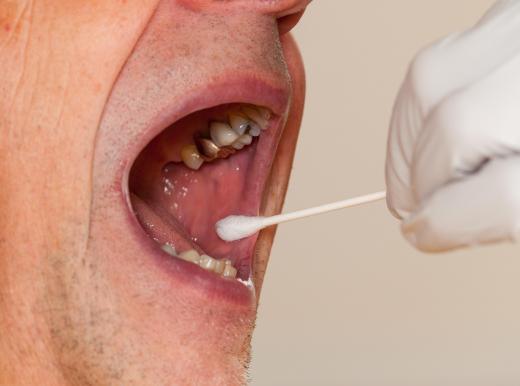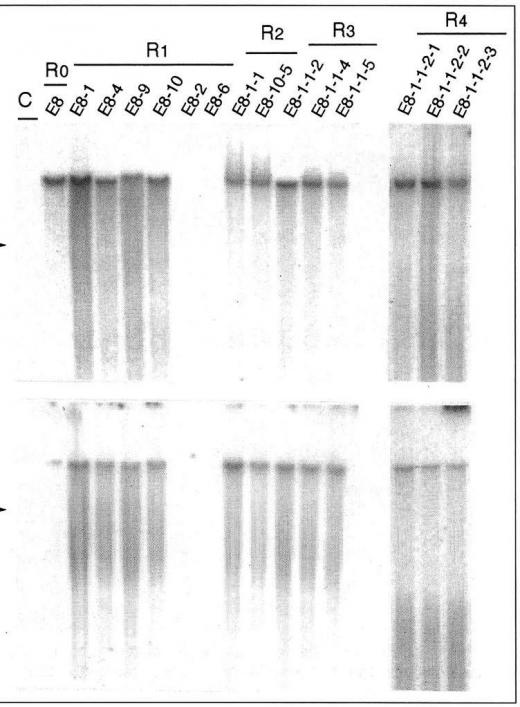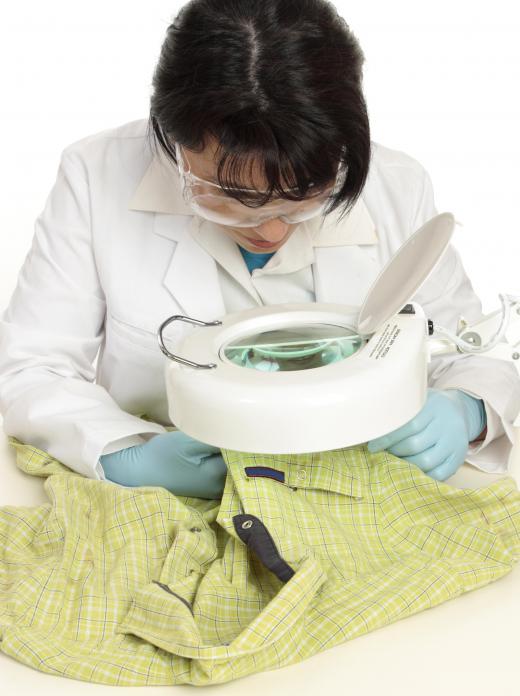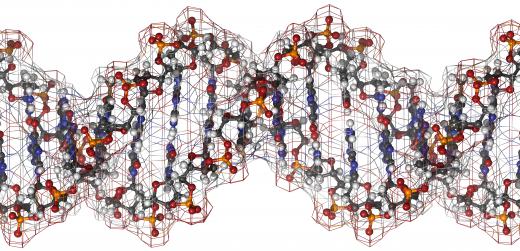What is Forensic DNA Analysis?
Forensic DNA analysis is used to identify individuals using genetic samples. Basically, the system uses a set of identifying numbers to match two different samples. The concept was first designed by Sir Alec Jeffreys at the University of Leicester in 1985. Today, it is a standard practice in conducting investigations for crimes such as murder and rape.
The process of forensic DNA analysis begins with DNA samples from an individual. This can come from bodily fluids such as blood, saliva or semen. It is usually obtained from personal items or stored samples. A reference sample must be made from a number of techniques and compared to samples to determine a genetic match. This is most commonly conducted using a buccal swab, or cheek swab, in the mouth.

There are a number of different ways to create sample DNA. Restriction fragment length polymorphism uses a process of digestion that identifies a person's DNA. However, this method makes individual chromosomes hard to identify. Polymerase chain reaction has the bonus of using small starting samples and can closely identify DNA. It is limited with mixed samples such as blood and saliva. Short tandem repeat analysis is the most commonly used method. It uses repeated base sequences of DNA to make matches.

Forensic DNA analysis relies heavily on the world's DNA databases. These are large collections of genetic coding which forensic scientists can match suspect DNA to existing samples already recorded. Some of these databases are private, however, most are managed by government agencies. The largest of such DNA databases is the Combined DNA Index System managed by the United States government. As of 2007, it held over five million records.

In the early days of forensic DNA analysis in the 1980s, concerns existed over the likelihood of DNA being used to prosecute criminals. However, as advancements were made, law enforcement determined that individual matches were able to both convict and exonerate individuals in cases. This was standardized by limiting the exposure of DNA to foreign substances in labs and other evidence in cases.

One facet of DNA analysis in forensics is the use of genetic material from a suspect's family members. Often a closely related suspect can be used to create a match. However, this concept receives a number of concerns due to the fact that an exact match is not needed. In addition, the search for matching DNA leads to racial profiling, which can receive a match with people not related.
AS FEATURED ON:
AS FEATURED ON:















Discussion Comments
I think that DNA analysis in forensic science has really helped a lot of innocent people get out of prison. I was watching a documentary the other day about a man that was wrongly convicted of armed robbery and because he had a criminal past and the victim picked him out of a line up, he was convicted.
But his wife hired a private investigator that was able to revisit the case because of DNA profiling. They realize that that the suspect was about a half a foot shorter and the man was released from prison. I have also heard of other cases in which a person was wrongly convicted of rape but set free because of the forensic DNA evidence.
Post your comments